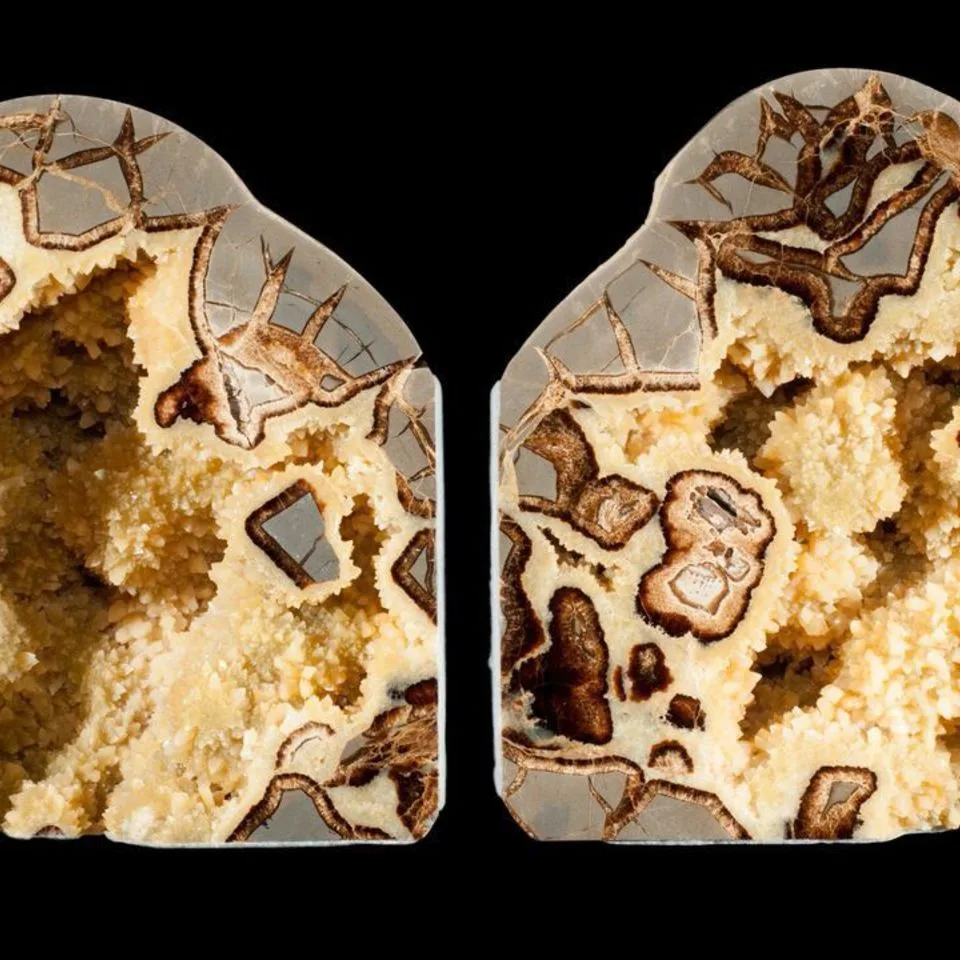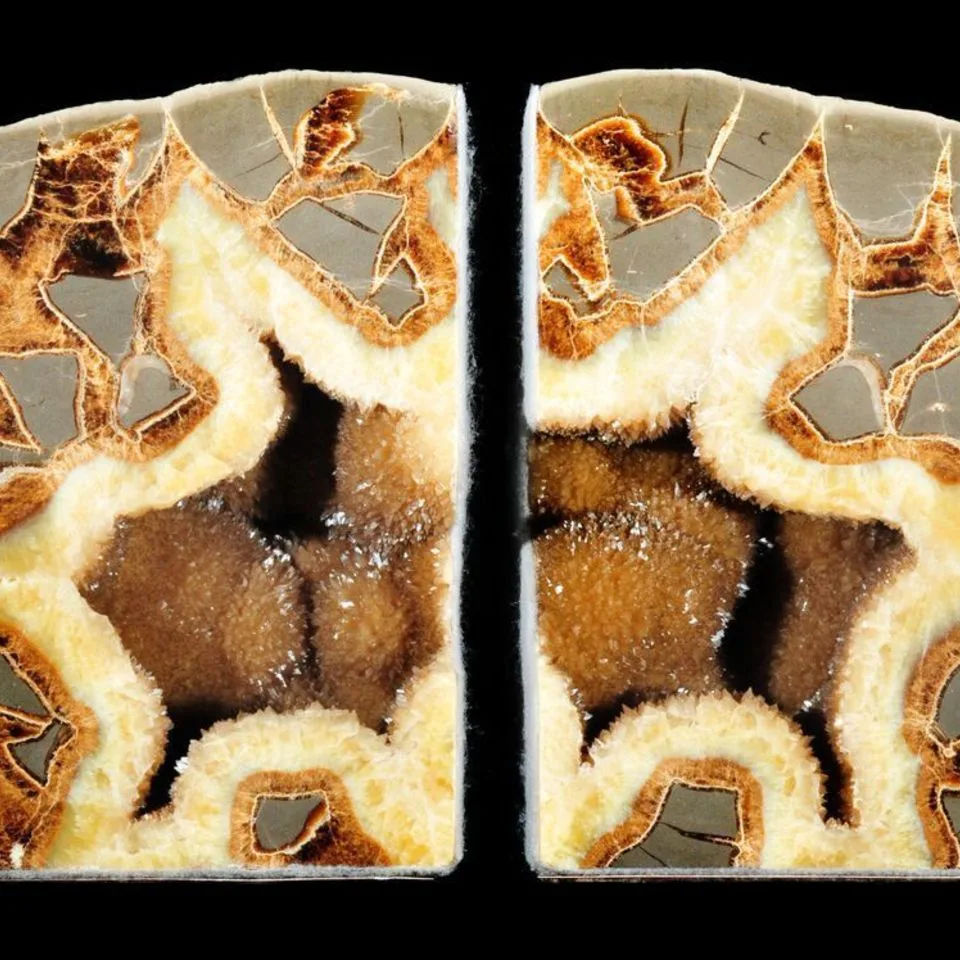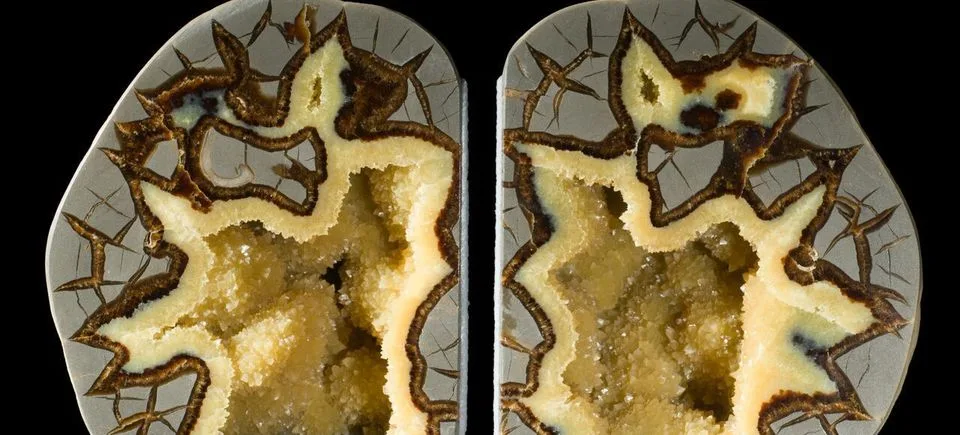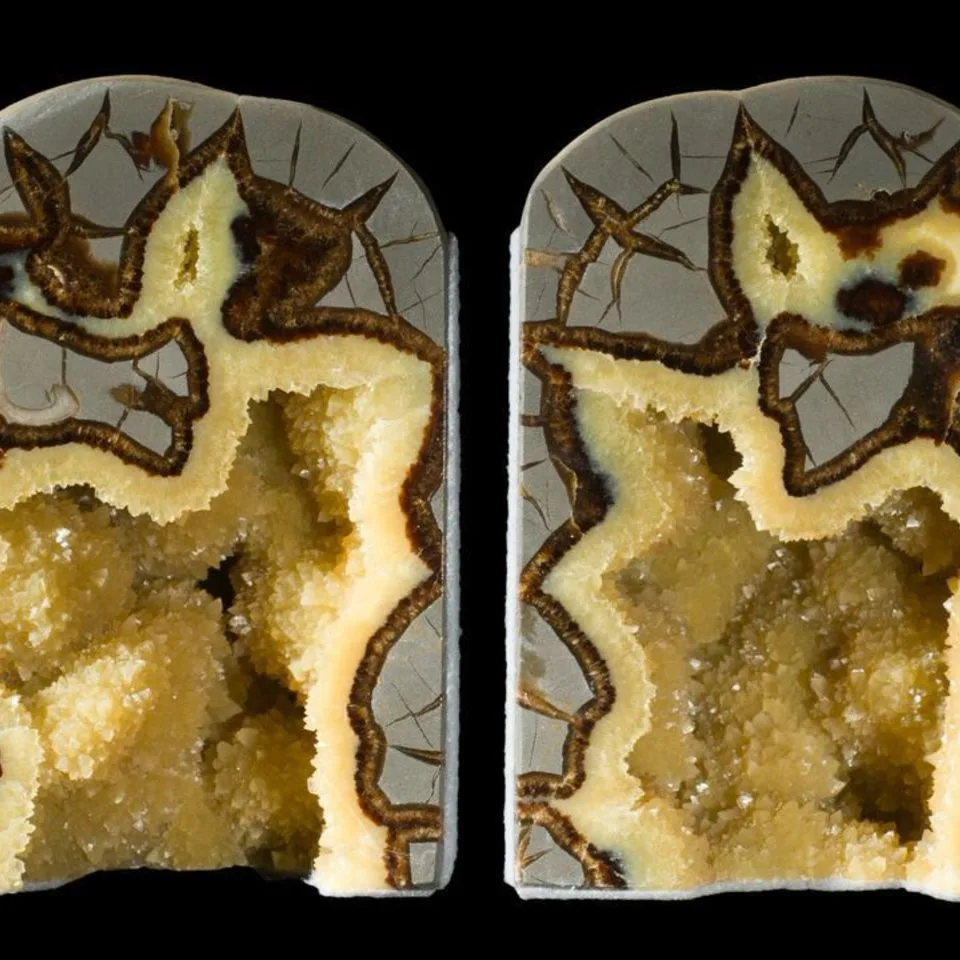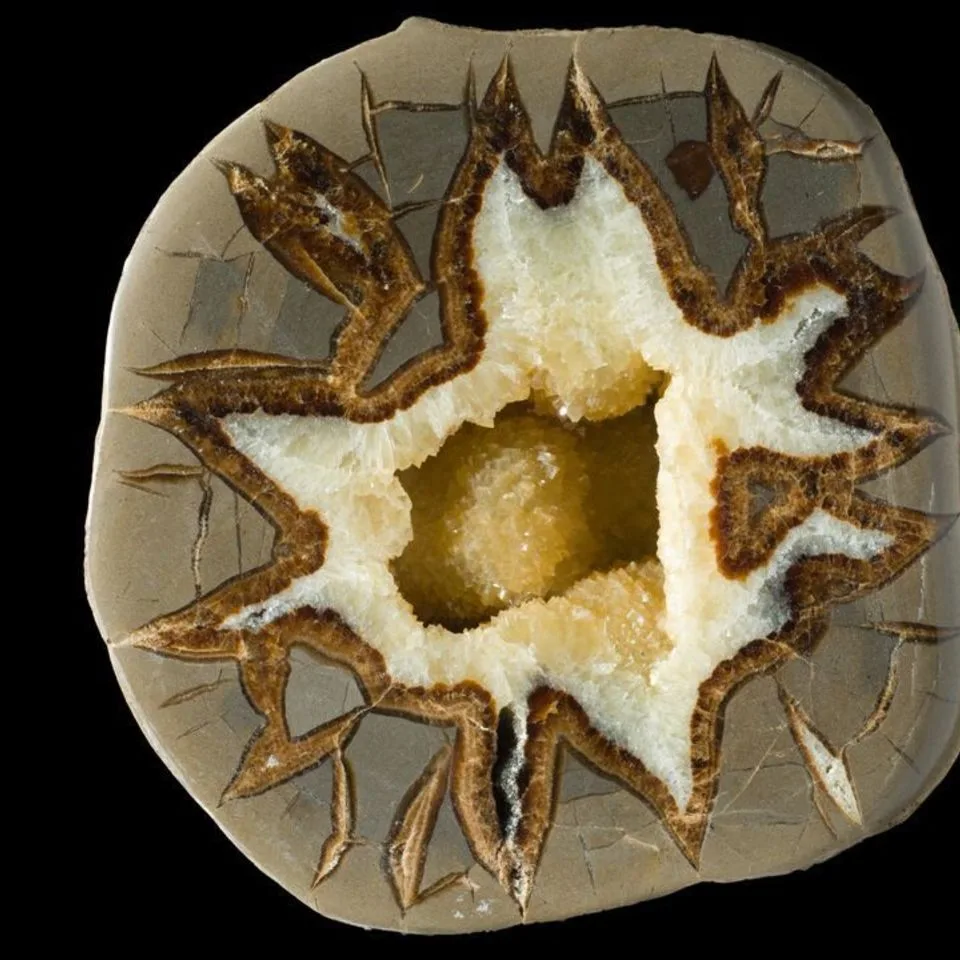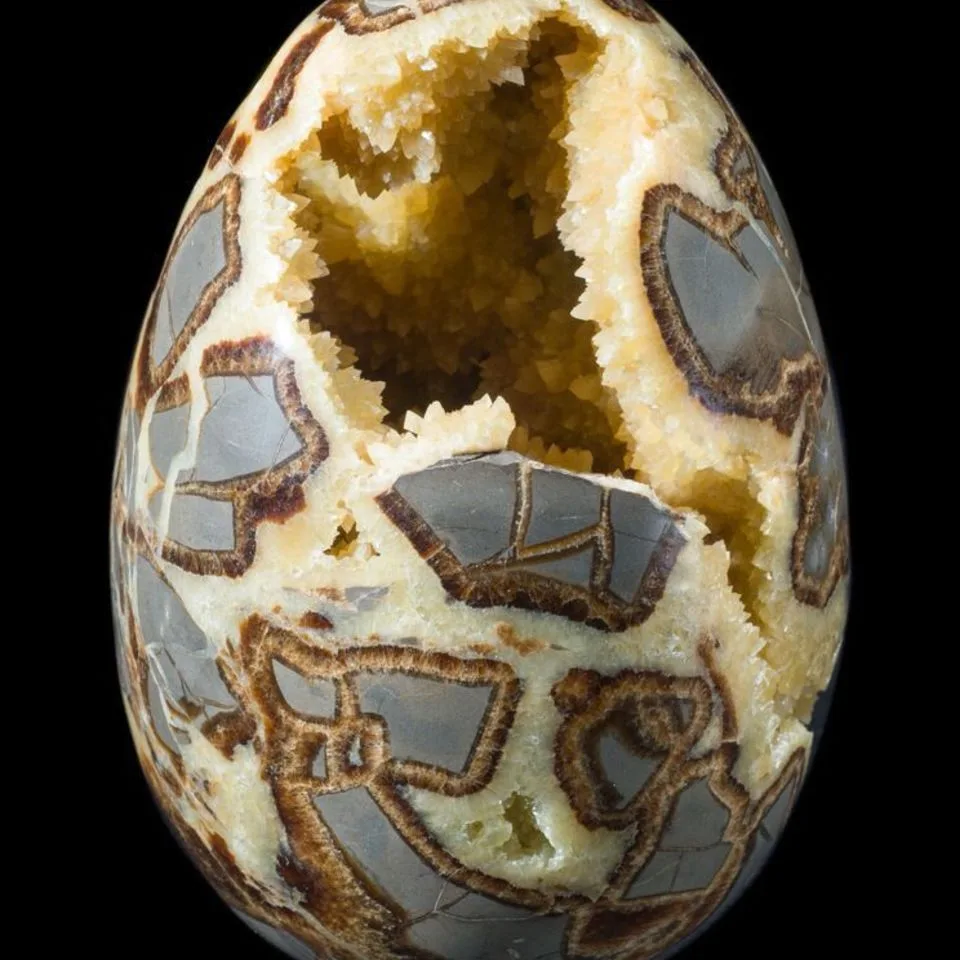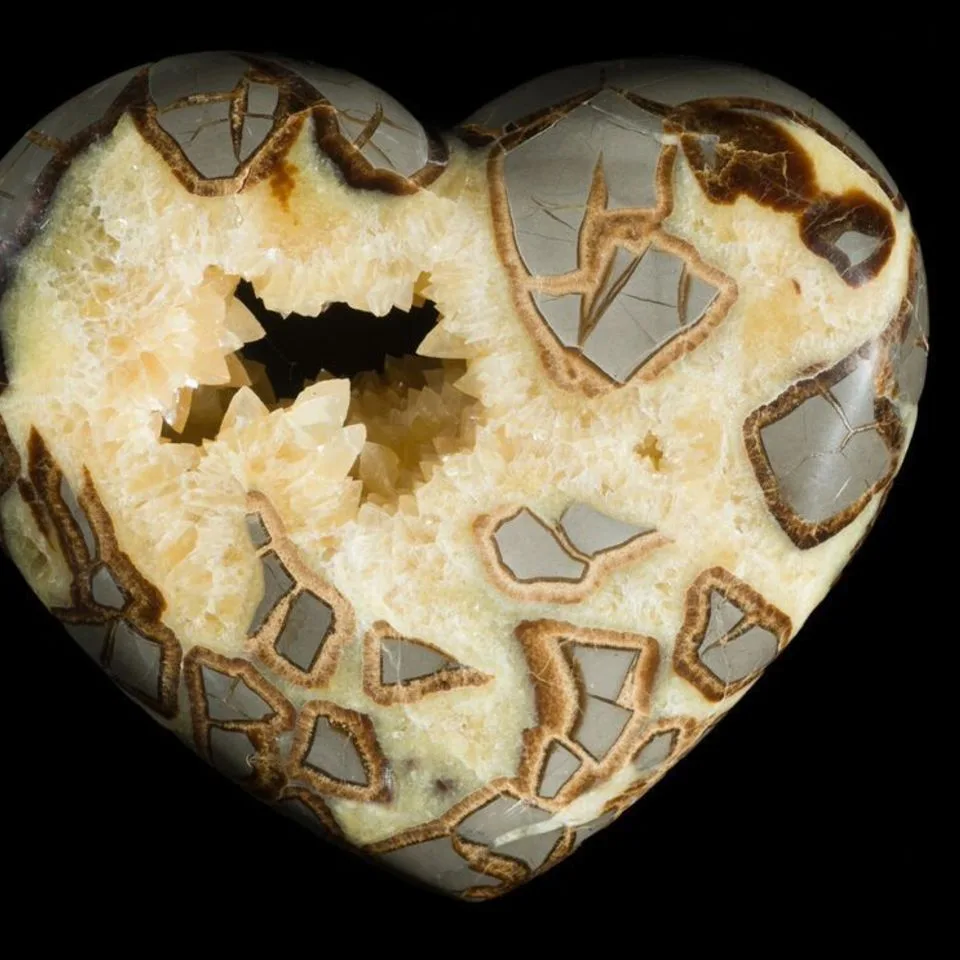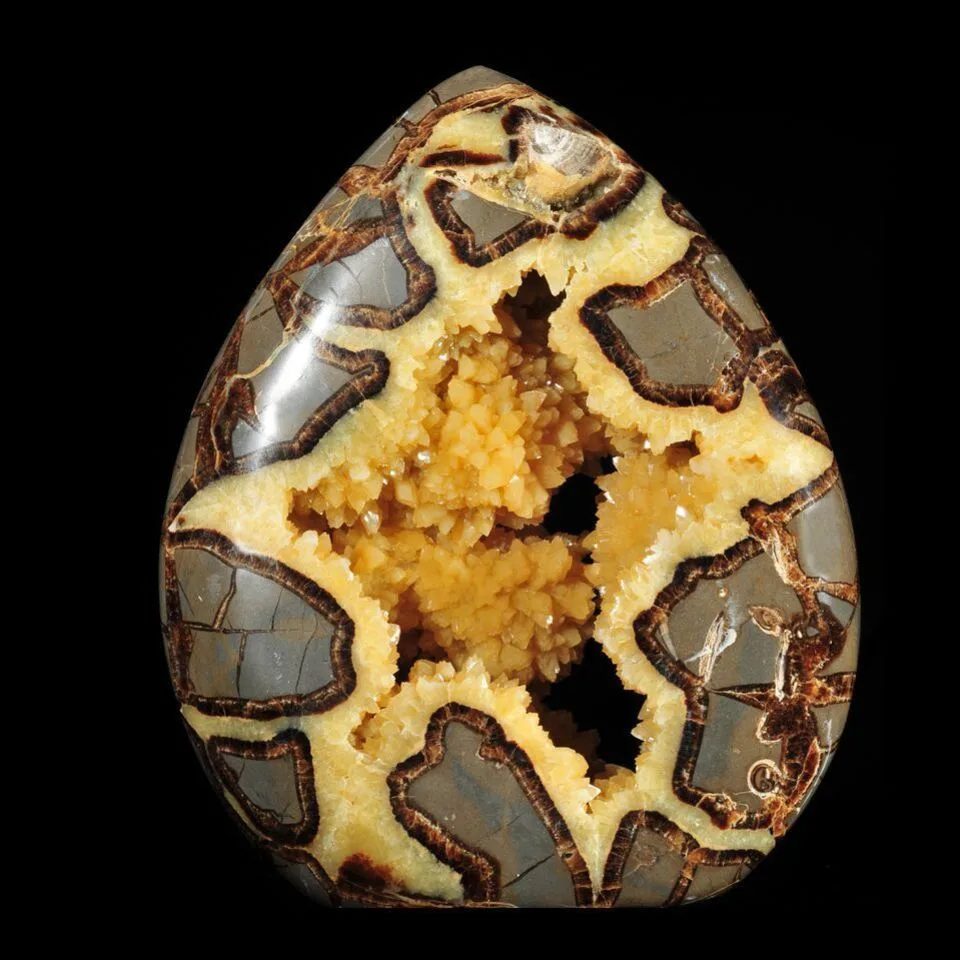Septarian
A concretion is a hard, compact mass of matter formed by the precipitation of mineral cement within the spaces between particles, and is found in sedimentary rock or soil.[1] Concretions are often ovoid or spherical in shape, although irregular shapes also occur. The word ‘concretion’ is derived from the Latin con meaning ‘together’ and crescere meaning ‘to grow’. Concretions form within layers of sedimentary strata that have already been deposited. They usually form early in the burial history of the sediment, before the rest of the sediment is hardened into rock. This concretionary cement often makes the concretion harder and more resistant to weathering than the host stratum.
There is an important distinction to draw between concretions and nodules. Concretions are formed from mineral precipitation around some kind of nucleus while a nodule is a replacement body.
Descriptions dating from the 18th century attest to the fact that concretions have long been regarded as geological curiosities. Because of the variety of unusual shapes, sizes and compositions, concretions have been interpreted to be dinosaur eggs, animal and plant fossils (called pseudofossils), extraterrestrial debris or human artifacts.
Septarian is generally a combination of Aragonite, Calcite and volcanic ash from Utah.
Dragon Eggs are a form of septarian from Madagascar with volcania ash and aragonite.
